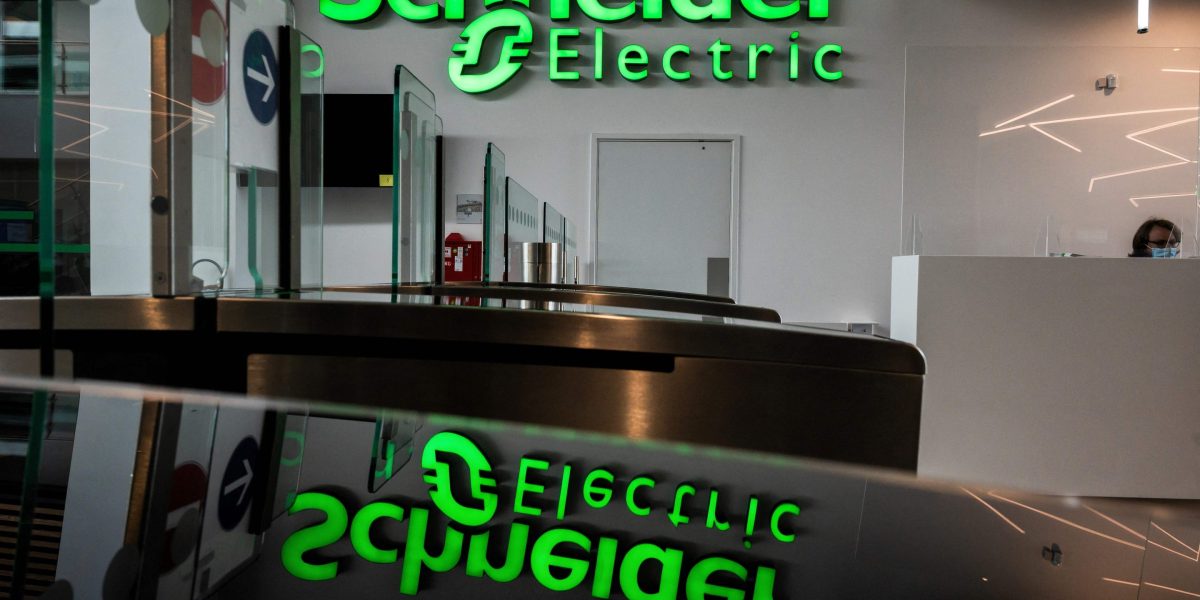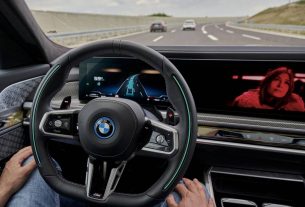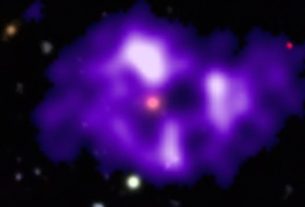“We didn’t wake up in the craze of sustainability, and said jeez, we need to get on the bandwagon.”
When Schneider Electric, the French multinational best known for its electric switchboards, announced this week it was launching software to help small- and medium-sized enterprises (SMEs) decarbonize, its president of sustainable business, Steve Wilhite, wanted me to know his company wasn’t a new kid on the block.
Quite the opposite. Schneider Electric, in fact, has been around for 187 years, the result of two banker brothers investing in coal and iron ore mines in a small town in Eastern France. The company helped industrialize and arm France, building railway bridges and producing weaponry, before entering the emerging electricity market a cool 130 years ago.
The company has been omnipresent in recent times. In October, it acted as a consultant for Walmart and its suppliers, orchestrating a deal for them to purchase 250,000 megawatt-hours of renewable energy from a major wind farm in Kansas. It was also one of the few large companies encouraging the U.S. Securities and Exchange Commission to include so-called Scope 3 emissions in its upcoming climate disclosure rules, which are expected soon.
But how did the company go from being a rather dull utility company, making electric switchboards, to getting an almost Tesla-like halo in recent years, playing a leading role in the green energy revolution?
“It started when we were managing […] energy for large global companies more than a decade ago,” Wilhite told me in a Zoom call from Louisville, Ky. “They wanted to know how to buy better, how to manage volatility, and how to get the data.” It prompted Schneider to redefine its role and act as an energy consultant—though one that could implement the advice they were giving their clients.
At first, that meant “scraping utility bills” to manage companies’ energy footprint, advising clients like Hilton or Marriott, which have thousands of locations, “how to buy better and reduce their consumption,” as Wilhite put it. It’s that reinvention over a decade ago that led Schneider to broker virtual power purchase agreements such as the Walmart one today.
Like with the Maersk case we looked at last week, though, a big part of this transformation has been achieved by M&A activity. (Schneider’s mines and weaponry divisions, to be clear, were discontinued decades ago.) The know-how, software, and A.I. capabilities Schneider uses today, are a combination of “organic” developments and the acquisition of several companies along the way.
Wilhite himself joined Schneider through one of those deals—the acquisition of Summit Energy in 2011. In 2013, the company bought Invensys, an industrial automation company, for $5 billion. In 2017, it added Renewable Energy Choice, to bolster its sustainable energy offering. And in January of this year, Schneider completed the acquisition of industrial software firm Aveva for $11 billion.
“Schneider understood that the market needed to evolve to answer market needs driven by climate change and digitization,” Wilhite told me. “That was the reason to shift from products like switchboards, to be much smarter and sustainable.” It explains why many of its largest acquisitions were either in software and A.I. or the renewable energy space.
It also brings us to the latest chapter in Schneider’s journey towards digitization and decarbonization, announced by the company this morning. It is the launch of a sustainability software product called Zeigo, which makes much of the energy advice Schneider was giving to large multinationals, available to their thousands of SME suppliers.
I’ll leave it to the market to find out whether that offering can be as much of a game changer as the overall reinvention of the company has been in the past two decades. From 2003 to 2022, the company almost quadrupled its revenues, from a little under $10 billion (€8.8 billion) to about $37 billion (€34.5 billion) today.
But what’s clear is that Zeigo meets a need. The number of Fortune 500 companies announcing net zero commitments continues to grow monthly, and they often include commitments to reduce their Scope 3 emissions. Yet, we’ve all heard the bewilderment of many of the SMEs in that supply chain, who don’t even know their carbon footprint—let alone know how to reduce it.
And if it all fails, there’s one thing Schneider can still fall back on. Back in the French Alps, I was replacing some light bulbs in our apartment last month. I happily discovered Schneider had been in our home all along…having made our excellent new electric switchboard.
More news below.
Peter Vanham
peter.vanham@fortune.com
ALSO ON OUR RADAR
The U.S.’s new rules on EVs are a boon for a startup in Sweden
“This week, the U.S. announced sweeping new carbon-emissions limits for automakers and truck manufacturers. Under the new rules, 35% of short-haul freight vehicles and one-quarter of long-haul trucks, will need to run on electric batteries,” my colleague, Vivienne Walt, wrote in Fortune on Thursday. That could be a boon for companies such as Einride, a Swedish mobility-software startup for heavy-duty trucks. Einride buys or leases hundreds of electric trucks, and embeds in those trucks its own A.I.-powered software platform, which helps identify routes for electric trucks, and where to charge them.
Italy’s Enel plans to add 10,000 public EV fast chargers in US by 2030
“Italy’s biggest utility company Enel SpA said on Thursday its unit plans to add more than 10,000 DC electric-vehicle chargers in the U.S. and over 2 million in total across North America by 2030,” Reuters reported. The announcement comes after “Walmart also announced plans last week for its own EV charging stations by 2030,” and follows “a pledge by U.S. President Joe Biden to build a network of 500,000 public EV chargers nationwide.”



